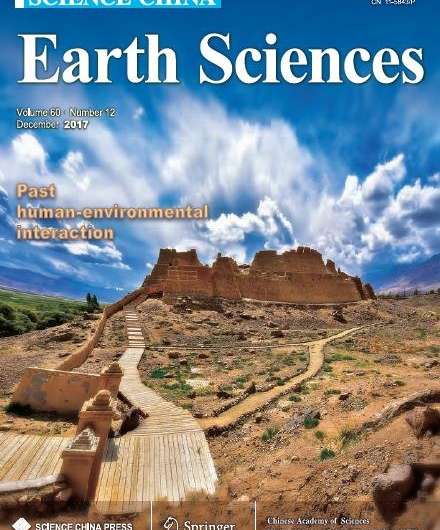Past human-environmental interaction. Credit: Science China Press
Many famous ancient civilizations such as ancient Egypt, Mesopotamia, Maya, Angkor, and the Han and Tang Dynasties in ancient China have emerged and flourished around the world. These highly developed civilizations in prehistoric and historical periods eventually declined, and then fell into oblivion in human history. Researchers have long been interested in the driving forces and mechanisms for the rise and fall of ancient civilizations.
In an article co-authored by Guanghui Dong, Fengwen Liu and Fahu Chen, scholars at MOE Key Laboratory of Western China's Environmental System, Lanzhou University, the authors illustrate environmental and technological effects on ancient social evolution at different spatial scales, and propose a possible mechanism for expounding the correlation between cultural evolution, environmental change and technological development, based on the scientific analysis of some classic case studies on the abandonment of ancient sites, the prosperity and collapse of ancient cultures, and demographic changes, as well as the influence of environment and technology worldwide during the prehistoric and historic periods.
There is an ongoing debate about the leading factors for ancient culture evolution. Some scholars believe that sudden serious disasters including floods, earthquakes and volcanic eruptions were major influencing factors that led to the destruction and abandonment of large settlements. Many scholars argue that climate change was the most important driving force behind the evolution of ancient civilizations. Other scholars suggest that major technological innovations (e.g., the domestication of crops and livestock) and their diffusion across the world were key factors in promoting population expansion and ancient social evolution. Moreover, how these factors induced the evolution of ancient civilizations remains unclear, as well.
The new paper argues that the dominant influencing factors for the evolution of ancient societies vary by spatial scale. At the local scale, sudden geohazards caused by tectonic movements and extreme weather events may have been key factors that led to the destruction and abandonment of large ancient settlements such as Pompeii and Lajia. On a regional scale, cold-dry climate lasting for decades or centuries followed by food shortages and conflicts arising from resource competition becomes an important factor for the decline of ancient civilizations and dynastic succession.
Stable and favorable climatic conditions could have increased resources and population growth, and led to prosperity and expansion of ancient civilizations. On a global scale, crucial technological innovations and their expansion in the long term (for centuries and millennia) significantly improve the ability of humans to procure and exploit resources, as well as facilitate expanded living space and rapid population growth, and social development.
More information: GuangHui Dong et al, Environmental and technological effects on ancient social evolution at different spatial scales, Science China Earth Sciences (2017). DOI: 10.1007/s11430-017-9118-3
Journal information: Science China Earth Sciences
Provided by Science China Press






















